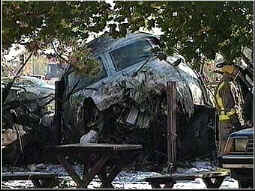…Safety…
Despite 2003’s being one of the industrys safest on record, 2004 ended on several sour notes. Although the NBAA noted in January there were no fatal accidents among corporate operators – its core constituency – in 2003, by the end of the year one notable corporate fatal accident had occurred, the Oct. 24 crash of a King Air 200 operated by Hendrick Motorsports into a Virginia mountaintop while attempting a missed approach. Though not corporate operations in the technical sense, the same-day crash of a Learjet 35A operated as an air ambulance near San Diego – along with other highly visible crashes and fatalities late in the year – will leave a black mark on 2004.

 Despite 2003's being one of the industrys safest on record, 2004 ended on several sour notes. Although the NBAA noted in January there were no fatal accidents among corporate operators - its core constituency - in 2003, by the end of the year one notable corporate fatal accident had occurred, the Oct. 24 crash of a King Air 200 operated by Hendrick Motorsports into a Virginia mountaintop while attempting a missed approach. Though not corporate operations in the technical sense, the same-day crash of a Learjet 35A operated as an air ambulance near San Diego - along with other highly visible crashes and fatalities late in the year - will leave a black mark on 2004.
Despite 2003's being one of the industrys safest on record, 2004 ended on several sour notes. Although the NBAA noted in January there were no fatal accidents among corporate operators - its core constituency - in 2003, by the end of the year one notable corporate fatal accident had occurred, the Oct. 24 crash of a King Air 200 operated by Hendrick Motorsports into a Virginia mountaintop while attempting a missed approach. Though not corporate operations in the technical sense, the same-day crash of a Learjet 35A operated as an air ambulance near San Diego - along with other highly visible crashes and fatalities late in the year - will leave a black mark on 2004.
Two other fatal crashes involving business jets - although not corporate operations - included the Nov. 22 fatal crash of a Gulfstream G-II on approach to Houstons Hobby Airport and the Nov. 28 Bombardier Challenger 604 crash during takeoff from Telluride, Colo.. The Gulfstream crash made national headlines because it was inbound to pick up former president George H.W. Bush; the Challenger event achieved the same dubious distinction because it carried NBC television executive Dick Ebersol. All three aboard the dead-heading Gulfstream died; one of Ebersols sons died in the Telluride crash, as did both pilots and a third crew member.






